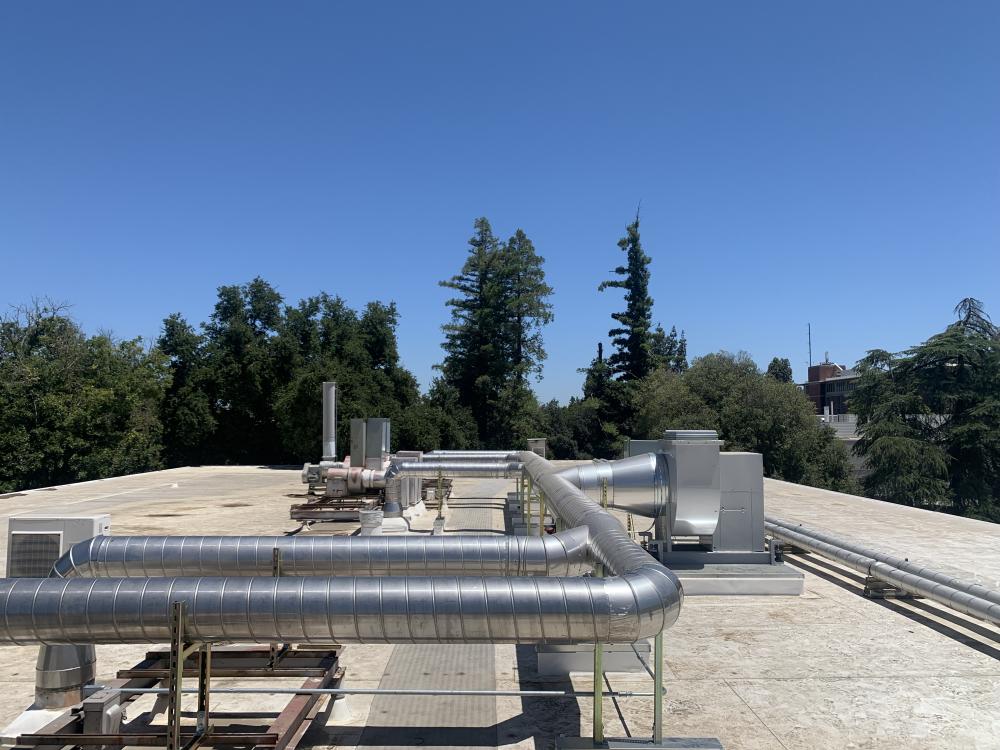Transforming Labs and Enhancing Efficiency
A Look at the Hoagland Hall Project

In a recent interview with Joe Lestanguet, inspector, Planner, Estimator (IPE) for Facilities Management Building Maintenance Mechanical unit, we delved into the background and details of a transformative project to enhance efficiency, reduce costs and contribute to our campus sustainability goals.
It all began when Rani Youngman, Director of the UC Davis Analytical Laboratory in Hoagland Hall, requested an estimate for a new 8' fume hood. The existing exhaust fan in the lab did not have the capacity to accommodate another hood, prompting discussions about a broader project involving the consolidation of six aging fans, all original to the 1959 building.
The motivation for this ambitious undertaking included:
- Addressing persistent issues with the original fans.
- Improving efficiency.
- Reducing maintenance costs.
- Responding to customer requests.
The decision to combine fans under a Deferred Maintenance (DM) project proved to be a multifaceted solution.
The project's scope encompassed the installation of a new 8' fume hood and the creation of all-new stainless-steel ductwork that consolidated six existing fume hood exhaust fans into one. The collaboration involved various departments, including carpenters, roofers, painters, electricians, plumbers, controls, ventilation, and sheet metal workers. The joint venture with DM funds and the customer amounted to $127k.
Joe described the technical aspects of the project, emphasizing the necessity to design ductwork and carefully select the appropriate fan to ensure optimal functionality. The project's significance lies in its potential as a foundation for future initiatives. It paves the way for a more efficient HVAC system, contributing to campus strategic goals and sustainability. The project will significantly reduce maintenance costs.
The project also aligns with campus safety, innovation, and sustainability goals. Originally designed with a 100% outside air HVAC system, the building's transformation reduces the number of exhaust fans, setting the stage for a more efficient HVAC system. The project eliminates obstacles to conducting further research by equipping the lab with the ability to engage in additional studies by installing a new fume hood. The project contributes to the campus community by significantly reducing maintenance costs, thus improving the overall operational efficiency of the facilities.
The potential next steps would include plans to replace the HVAC system serving the rest of the building in the future. This initiative aims to reduce maintenance and energy costs further.
This project is a testament to Facilities Management's commitment to innovation, efficiency, and sustainability, showcasing how strategic planning and collaboration can lead to transformative outcomes. Congratulations to the entire BMS team that completed this project together!